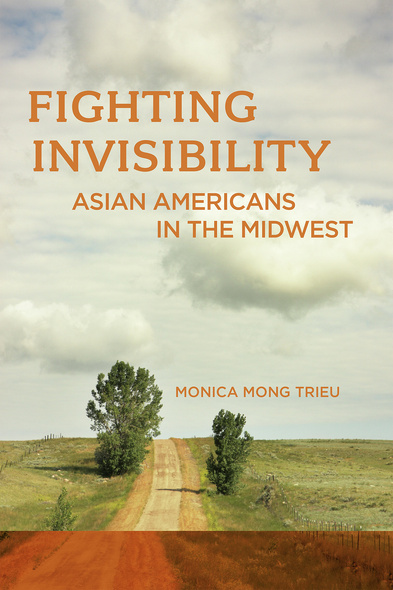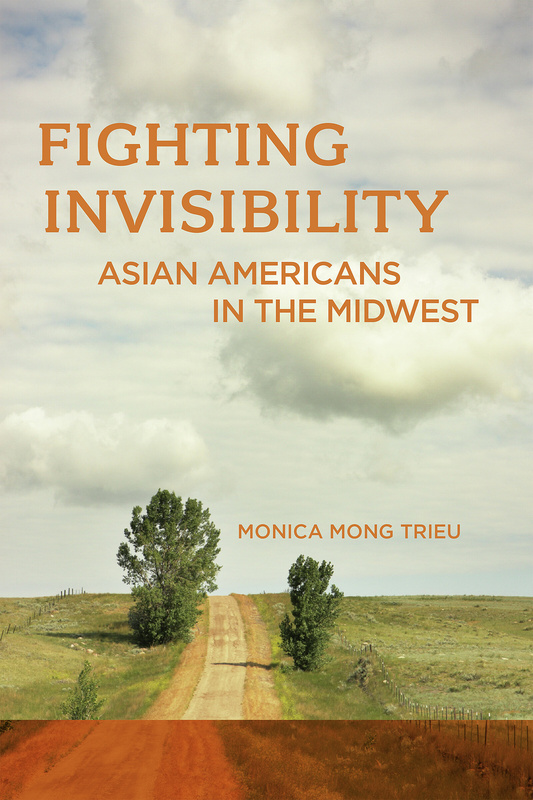
184 pages, 6 x 9
2 B-W illustrations, 5 tables
Paperback
Release Date:17 Mar 2023
ISBN:9781978834286
Hardcover
Release Date:17 Mar 2023
ISBN:9781978834293
In Fighting Invisibility, Monica Mong Trieu argues that we must consider the role of physical and symbolic space to fully understand the nuances of Asian American racialization. By doing this, we face questions such as, historically, who has represented Asian America? Who gets to represent Asian America? This book shifts the primary focus to Midwest Asian America to disrupt—and expand beyond—the existing privileged narratives in United States and Asian American history.
Drawing from in-depth interviews, census data, and cultural productions from Asian Americans in Ohio, Wisconsin, Nebraska, Minnesota, Illinois, Iowa, Indiana, and Michigan, this interdisciplinary research examines how post-1950s Midwest Asian Americans navigate identity and belonging, racism, educational settings, resources within co-ethnic communities, and pan-ethnic cultural community. Their experiences and life narratives are heavily framed by three pervasive themes of spatially defined isolation, invisibility, and racialized visibility.
Fighting Invisibility makes an important contribution to racialization literature, while also highlighting the necessity to further expand the scope of Asian American history-telling and knowledge production.
Drawing from in-depth interviews, census data, and cultural productions from Asian Americans in Ohio, Wisconsin, Nebraska, Minnesota, Illinois, Iowa, Indiana, and Michigan, this interdisciplinary research examines how post-1950s Midwest Asian Americans navigate identity and belonging, racism, educational settings, resources within co-ethnic communities, and pan-ethnic cultural community. Their experiences and life narratives are heavily framed by three pervasive themes of spatially defined isolation, invisibility, and racialized visibility.
Fighting Invisibility makes an important contribution to racialization literature, while also highlighting the necessity to further expand the scope of Asian American history-telling and knowledge production.
In this remarkably perceptive book, Trieu’s multilayered narratives of racialization in the Midwest brilliantly contextualize how belonging, representation, and resistance are negotiated.
The stories of Asian Americans in the Midwest remain poorly recognized and understood – until now. Fighting Invisibility frames these Asian Americans’ experiences within the context of U.S. racial history and culture, revealing the power of geography in the process. The result is a thought-provoking, highly readable book that should be read from coast to coast.
MONICA MONG TRIEU is an associate professor of American studies and Asian American studies at Purdue University, Indiana. She is the author of Identity Construction among Chinese-Vietnamese Americans: Being, Becoming, and Belonging.
List of Illustrations
Introduction: Asian America in America’s Heartland
Who Is Midwestern Asian America? A Demographic Overview and Personal Histories of Post-1950s Midwestern Asian Americans
“I Only Knew It in Relation to Its Absence”: Isolated and Everyday Ethnics on Spatial Contexts, Community, and Identity
“Why Couldn’t I Be White?”: On the Legacy of Colonialism, Racism, and Internalized Racism in the Midwest
Crafting “Sharp Weapons” in the Heartland: The Making of Cultural Productions as Racialized Subjects
Conclusion
Epilogue: A Final Note on Moving Forward for Asian America
Appendix: Selected Characteristics of Study Participants
Acknowledgments
Notes
Bibliography
Index
Introduction: Asian America in America’s Heartland
Who Is Midwestern Asian America? A Demographic Overview and Personal Histories of Post-1950s Midwestern Asian Americans
“I Only Knew It in Relation to Its Absence”: Isolated and Everyday Ethnics on Spatial Contexts, Community, and Identity
“Why Couldn’t I Be White?”: On the Legacy of Colonialism, Racism, and Internalized Racism in the Midwest
Crafting “Sharp Weapons” in the Heartland: The Making of Cultural Productions as Racialized Subjects
Conclusion
Epilogue: A Final Note on Moving Forward for Asian America
Appendix: Selected Characteristics of Study Participants
Acknowledgments
Notes
Bibliography
Index








